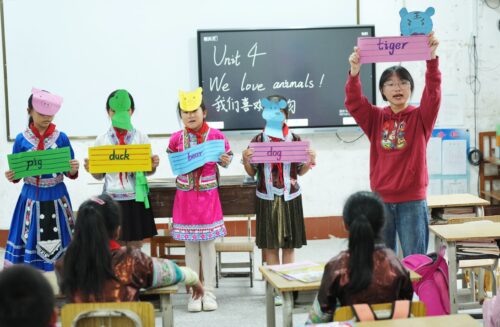Educational investment: the next frontier in U.S.-China philanthropy
There is a widespread understanding among donors of the long-term impact of education on China’s prosperity and a commitment to equal opportunity in a country that has recently witnessed growing inequality.

Climate has often been touted as a standalone issue for U.S.-China cooperation in response to escalating tensions. Likewise, educational investment between the two countries presents significant potential for philanthropic collaboration and partnership in a time of tense U.S.-China relations.
Education has long been a top priority for Chinese philanthropists and foundations. Education topped the 2019 Hurun China Philanthropy List, as it has every year since 2012, accounting for 35% of the $3.28 billion in total giving by Chinese philanthropists in 2019. Among high net worth individuals in China, over 40% of their annual giving goes toward educational causes. According to the Forbes China Philanthropy List, nearly half of all philanthropic donations went to education.
Within education, alma maters received the majority of donations, led by Peking University and Tsinghua University. According to the Harvard Ash Center, in 2018, 87 Chinese universities each received total donations that were valued at over RMB 10 million ($1.5 million). Institutional donors fund campus construction and endowment, as well as financial aid, scholarships, and research.
In the U.S., 58% of philanthropic donations in the U.S. went to education in 2018. Foundations like Rockefeller and Ford have a long history of supporting education efforts in China, as well as Chinese studies programs in the states. More recently, the Schwarzman Scholars’ $600 million investment by a group of global donors to fund higher education in China represents the importance of charitable giving to the burgeoning philanthropic sector in China.
Looking outside China
Chinese philanthropists and foundations, as in other aspects of philanthropy, are increasingly engaging with the global community to learn about innovative practices. Many Chinese philanthropists have been donating to educational institutions overseas. In 2016, Chen Tianqiao, chairman of investment firm Shanda Group, donated $115 million to establish a neuroscience institute at Caltech. In 2017, Chen Yidan, co-founder of Tencent, set up a $7.8 million annual global award to support outstanding research and development programs. In 2014, Zhang Xin and Pan Shiyi, the real estate tycoon couple of SOHO, donated $15 million and $10 million to Harvard and Yale respectively to establish scholarships for Chinese undergraduates to study abroad. While some within China criticized them for donating to foreign institutions instead of promoting the education sector within China, the move was indicative of a shift for Chinese philanthropists who are increasingly looking internationally to cultivate the next generation of Chinese leaders.
Chinese American philanthropists have also been prioritizing the global education of Chinese youth, whose ability to operate on the world stage as future leaders is dependent on their ability to navigate and guide global dynamics. Victor and William Fung who run Li & Fung Group, one of the largest trading companies in Hong Kong, sponsored fellowships for Chinese students to study abroad. James Chao, founder of the Foremost Group, established an executive center at Harvard Business School named in honor of Ruth Mulan Chao to train students from all over the globe. Duan Yongping, founder of the Subor Electronics Industry Corporation, funded a scholarship at Ohio University to support Chinese students pursuing careers as entrepreneurs..
Grassroots education philanthropy on the rise
The field of educational philanthropy is diverse and also goes well beyond institutional giving. Education has long been viewed as a prescription against poverty in China. There is a widespread understanding among donors of the long-term impact of education on China’s prosperity and a commitment to equal opportunity in a country that has recently witnessed growing inequality.
Much of this philanthropy is aimed at creating opportunity and promoting equality benefiting China’s rural and poor provinces by supporting educational programs and interventions predominantly at the tertiary and vocational levels. In 2017, Chinese foundations supported nearly 7,000 educational programs, with 90% of the funding targeting disadvantaged children. Chinese educational philanthropy has focused on school improvement, new courses and educational resources, and research and advocacy programs that complement the basic services provided by schools.
By seeking to bring quality education to underserved and disadvantaged communities in China, U.S. and Chinese philanthropists acknowledge the long-term impact of education on both individual wellbeing and national prosperity, and can collectively tackle the underlying causes that hamper greater social welfare and equity in contemporary Chinese society.
*
Want to learn more? The Serica Initiative’s China Philanthropy & Nonprofit Newsletter is a monthly deep-dive into the trends, major players, and regulatory environment for philanthropic and nonprofit activity between the U.S. and China. Subscribe to the newsletter here.






